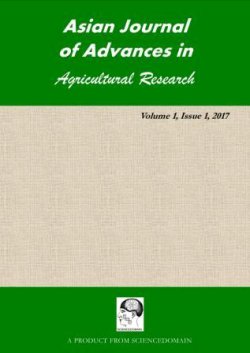Ver ítem
- xmlui.general.dspace_homeCentros e Institutos de InvestigaciónCICVyA. Centro de Investigación en Ciencias Veterinarias y AgronómicasInstituto de Microbiología y Zoología AgrícolaArtículos científicosxmlui.ArtifactBrowser.ItemViewer.trail
- Inicio
- Centros e Institutos de Investigación
- CICVyA. Centro de Investigación en Ciencias Veterinarias y Agronómicas
- Instituto de Microbiología y Zoología Agrícola
- Artículos científicos
- Ver ítem
Responses of Rhopalosiphum padi (L.) (Homoptera: Aphididae) on different wheat cultivars under laboratory conditions
Resumen
Bird cherry-oat aphid, Rhopalosiphum padi (L.), a polyphagous species with a worldwide distribution, is an important pest of wheat as well as the main vector of barley yellow dwarf virus. The development, survivorship, and life table parameters of R.padi were evaluated in a growth chamber on seven wheat cultivars as follows: ACA 315, Baguette 12 P, BioInta 1002, BioInta 2004, Buck Meteoro, Klein Yarará and LE 2330 at controlled conditions (20±1°C; about
[ver mas...]
Bird cherry-oat aphid, Rhopalosiphum padi (L.), a polyphagous species with a worldwide distribution, is an important pest of wheat as well as the main vector of barley yellow dwarf virus. The development, survivorship, and life table parameters of R.padi were evaluated in a growth chamber on seven wheat cultivars as follows: ACA 315, Baguette 12 P, BioInta 1002, BioInta 2004, Buck Meteoro, Klein Yarará and LE 2330 at controlled conditions (20±1°C; about 70% RH; 14h photophase). The development times of immatures ranged from 6.6 days on Buck Meteoro to 9.9 days on ACA315, whereas immature survival was 90 to 100%. The intrinsic rate of increase (rm) for ACA 315, Baguette 12 P and BioInta 2004 were the highest. Jackknife estimates of rm ranged from 0.327 to 0.204 females/female/day on BioInta 1002 and ACA315, respectively. The mean population generation times (T) on these hosts ranged from 10.91 to 19.66 days. The highest net reproductive rate (R0) were on BioInta 2004 (98.98 females/female/generation) and the lowest on BioInta 1002, Buck Meteoro, Klein Yarará and LE 233 (35.32 to 39.59). Because of the high coefficient of determination (pseudo-R2) values in Gompertz and Weibul models, survival data from different cultivars had a good fit to both models. The results pointed ACA 315, Baguette 12 P and partially BioInta 2004 as the least suitable host plants, indicating that they were the most resistant to R. padi among the cultivars we tested.
[Cerrar]

Fuente
Asian journal of advances in agricultural research 1 (2) : 1-11. (2017)
Fecha
2017-06
ISSN
2456-8864
Formato
pdf
Tipo de documento
article
Palabras Claves
Derechos de acceso
Abierto
 Excepto donde se diga explicitamente, este item se publica bajo la siguiente descripción: Creative Commons Attribution-NonCommercial-ShareAlike 2.5 Unported (CC BY-NC-SA 2.5)
Excepto donde se diga explicitamente, este item se publica bajo la siguiente descripción: Creative Commons Attribution-NonCommercial-ShareAlike 2.5 Unported (CC BY-NC-SA 2.5)


